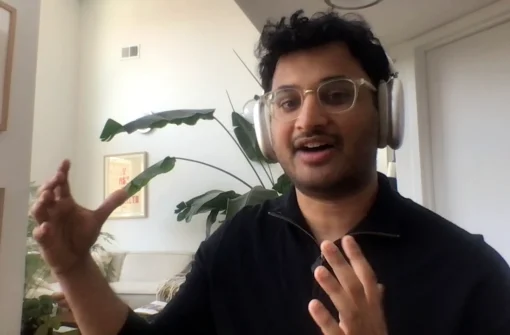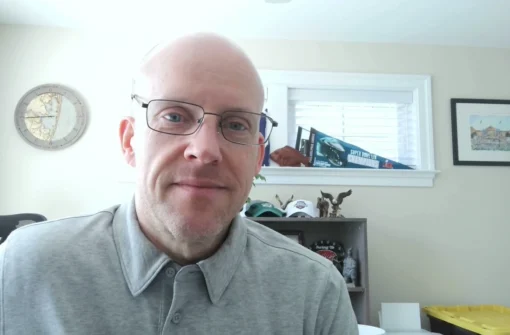
Unlocking Creativity And Productivity: Damien Helleboid On Trust And Collaboration
Does your organization rely on external partners located offshore? Or perhaps they are closer to you but have been working remotely since the pandemic? What factors influence their creativity and productivity? Today, we explore these questions and more with Damien Helleboid. Damien is the Director of Prarion Limited. He brings a rich combination of technical expertise and leadership skills. His career spans diverse roles across major tech firms, and his pivotal positions at Transavia and LeasePlan demonstrate his ability to lead digital projects from conception to completion.
In a conversation brimming with vivid examples, Damien emphasizes the impact of trust and teamwork on digital transformation initiatives.
Pega® is a trademark of Pegasystems Inc. Please visit https://www.pega.com to learn more.
Transcript
Damien, welcome.
Thanks for having me.
It’s great to have you on the show, especially because of your diverse experience. You’ve held implementation, pre-sales, and leadership roles. Can you start by describing what was different between them and what was common?
I would say that the common point is every single time, it’s about resolving issues. Depending on the position, the issues might be slightly different but because it is technology, you have always similar types of issues. To be honest, one of the most common ones is usually human issues. A program is a bit stupid. It does what it’s programmed to do, especially in pre-sales.
In pre-sales, you’re going in and you know what your technology can do. You want to see if there’s going to be a fit with the business interacting with them, either prospect or existing client. Some of the issues are also similar in nature, but you’re also arriving at a different stage in the mind of the business you’re interacting with.
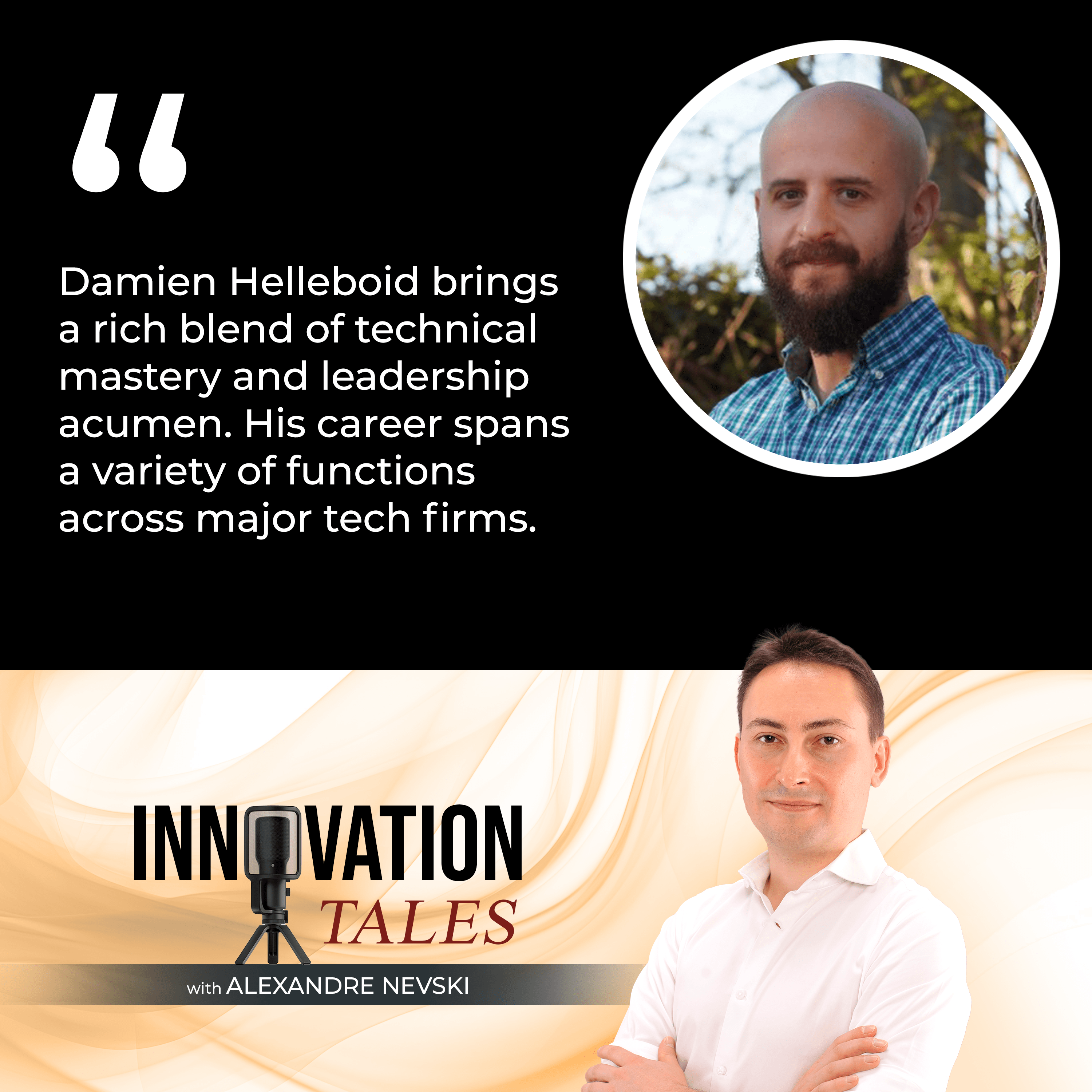
Particularly in pre-sales, you’re arriving. There’s no project to have an issue,- either trying to solve it and you’re there to shape it. Can we fix it using this technology or not? Whereas when you’re implementing, particularly you’re arriving after the fact. You’re arriving out, this technology has been sold with various promises.
Let’s call them assumptions.
In the other businesses, it’s usually promises but anyway. You arrive there and your business has a clear idea and you need to go and implement it. In a leadership position, it’s not as much as a point in time, like before or after. It’s more we have these types of issues. How are we going to solve them? My positions were always linked to Pega.
I’m in a COE leadership position. There’s a mix between both. We’re having typical questions around, should we upgrade, for instance? This is more a pre-sale type of questioning because you can make the decision or not, and then you decide to implement or not. You will have an implementation problem when you decide to go with the upgrade. There’s a little bit of a mix of both. The leadership has a lot more of the human aspect to take into account.
Echoes Of Innovation
Timing is clearly different and the proportion may be between the human element and the focus on the technology. As we navigate stories of innovation, I advise using discretion with names and specifics to bring authentic insights to our audience while upholding the highest levels of privacy and respect for all individuals involved. I feel like when people embark on digital transformations, some aspects may be overrated. Other aspects very often, at the beginning seem to be left to chance only to be later on put to the forefront because you couldn’t avoid them. What’s your experience?
I would say for digital transformation, there’s always unknown because you have a business. One of the examples I wanted to take anyway, which is a good segue. I went on a project that was fully paper. We were doing KYC for a bank, completely paper. It’s like everywhere. Some of the guys didn’t even have a screen. I’m a Millennial. It’s like, “There’s no screen in this office. It’s all paper.”
The office manager, a lovely lady was there and she was like, “This is where we take these papers from this basket then we move it to this desk.” You could see the flow of paper going around the office and you had massive blackboards with stats. You had a guy running between desks. “How many have you done?” You could go and report on the blackboard. I’m assuming that must have been how business was done before. When you come in, their expectations are super high. That’s where you wanted to go with your question.
What do you think their expectations are? What did they imagine was going to happen?
They wanted to get rid of the paper. They had these funny stories. At some point, they had loan applications for small to medium enterprises. They were like, “At some point, we had some companies coming back to us. They’re like, ‘We applied a month ago, and they haven’t come back to us.’ We’re like, ‘I don’t know. We don’t have an application.’ It turned out like a pile of paper had fallen behind a shelf.” It’s funny like that, but it’s not funny for the businesses because you have small and medium businesses that are counting on the bank to provide the credit.
What they wanted was to become more efficient and track better. You see in this world, there’s a lot of fraud. They want to become more efficient with that stuff. Their fraud was basically a big Google search string that they would put the names of the people in there. That was pretty much their KYC at the time. They wanted to improve on that. They both expected a technological revolution. Talk about a revolution in that office because they didn’t have a computer. Again, most of the guys were twenty-something years old glued to their phones and they’re working with papers.
For them, it was like, “We’re going to get a computer. We’re going to become more efficient.” From a business perspective, there was only this expectation that we’d help them build and design their process in conjunction with helping each other. We bring both our technological expertise, but also some of our business expertise. I know as KYC, it’s probably the one thing I’ve implemented the most overall. Even though it probably only represents 15% or 20% of what I’ve done, I must have done at least 3 or 4 KYC, if not more than that.
It’s a very specific domain.
The expectation is both technological but also business knowledge because they know we’ve done it before. They are waiting for a bit of guidance. It’s not always smooth but it never is anyways.
The business people are not familiar with the technology at first. They will not just learn about all of the implications. They might see demos of functionality, but understanding how various configuration options affect how much they’re going to be paying every year for maintenance. That’s more performance that has impacted them even earlier.
It does, and they’re like, “Why is it so slow?” It’s because you didn’t let us do our work.
That is not something that they can get out of a single demo. In that example, you were saying that it went quite well. What made it go smoother than usual?
First of all, as I said, they were on paper. There was a willingness to move away from paper. As I mentioned earlier, for many reasons, efficiency and not losing paper. There was a drive to get that done. Sometimes, that’s something that gets a little bit lost. You will get customers or people coming to you just because they think they have to but they already have a system. It might not be the most perfect system but it allows them to do their job.
Sometimes there can be overkill in terms of your drive. You don’t have to drive. You think you need to do that other digital transformation but you don’t. You just need to think about it or you haven’t thought about it properly. One thing that I did learn in pre-sell that was interesting as one of the account execs taught me that is when a prospect or an existing customer comes with a problem, you need to read between the lines because oftentimes, the problem that they’re going to describe. First of all, they’re going to solutionize it.
They’re going to come to you with a solution that’s going to sound like a problem. It’s your job to try to scratch a little bit. Ask the right question and figure out what’s the real problem. Do they need new software or is the software that they want or the path they want to take for their software the correct one? That’s where you need to try to gently guide them towards a better solution.
One of the other things that I want to mention here and it’s like a running joke, is that you always go to a new business and they’re always like, “We do things differently here.” No, you don’t. Stop thinking you’re doing things differently. Everybody is doing the same thing. There are small variations, but most businesses do the same thing, especially in big corporations. People at the top move from one to the other. It’s usually very similar problems that have very similar solutions.
Stop thinking you are doing things differently. Everybody is doing the same things, just with small variations. Therefore, everyone faces similar problems that have similar solutions.
The other issue coming from the technology side when you’re trying to understand doing the active listening scratch is that you’re also expected to do a lot of work on the technology side. I find it important to have the mental space, the energy, and the creativity because if I’m deep down in some integration or some technical question of some sort, I may be working with a client, IT representatives or something. I have to complex switch and do a business piece. Why are we doing this? What’s behind this, as you were saying? It’s quite an effort, don’t you think?
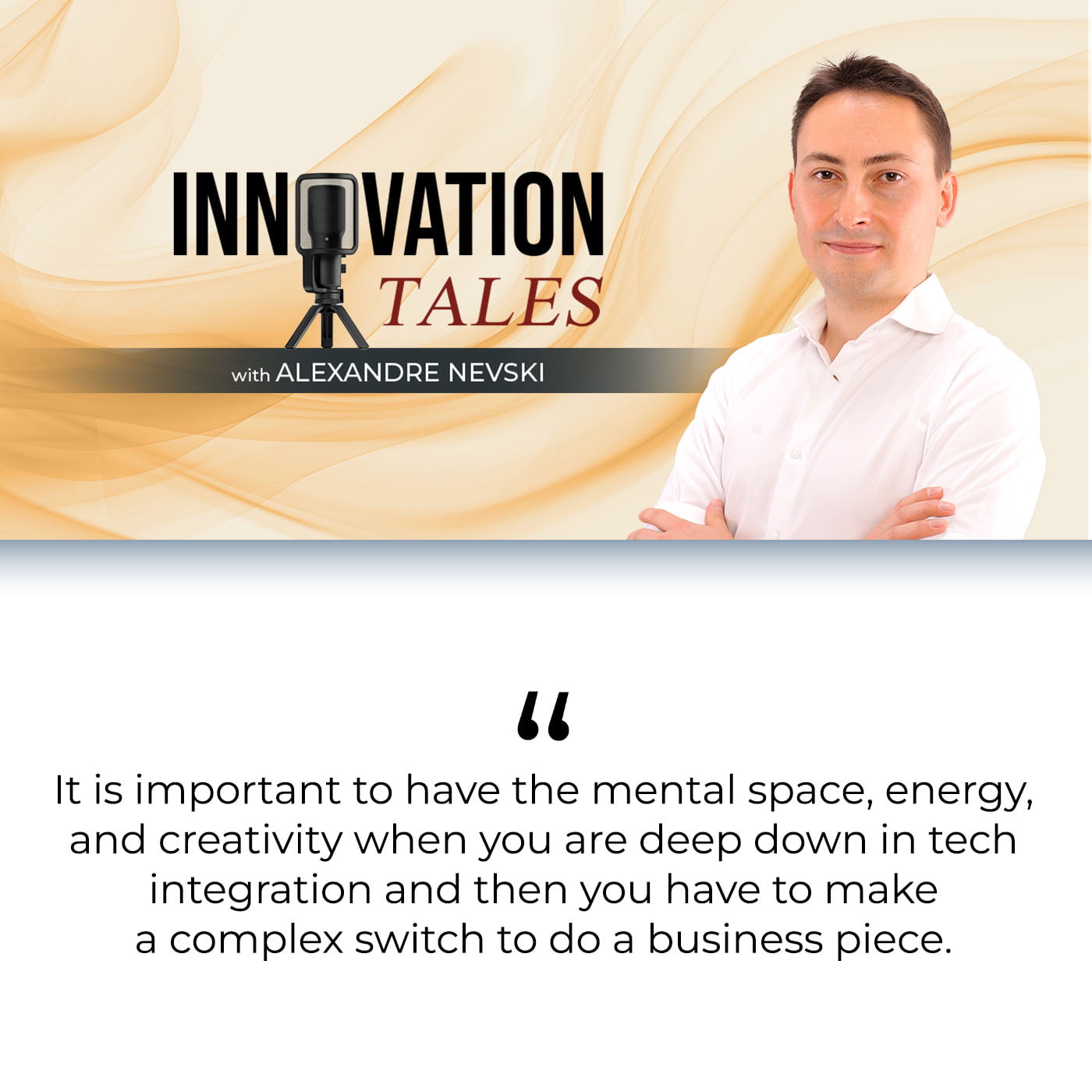
Yes, it is. This is where my core belief is that the tool doesn’t matter in the end. What’s important is to have a good team with mixed skills. That paper project that we’re replacing was still in my implementation phase. That was just before pre-sales. I was DLSA, an elite system architect in Pega Lingo. I remember we were in this hotel, meeting room hiring out requirements.
We had some onshore resources, but we had a bunch of offshore resources as well. We had another say in driving the offshore resources. A guy comes in, a bit shy, but then I quickly realize the guy is brilliant. Very good. Way better than me, technically speaking. I remember coming back home, I was like, “There’s this guy. He’s way better than I am. I just know. There’s no point in fighting it. The guy is better than me. There’s nothing I can do about this. What can I do about that? How can I still be useful to the project or can I still be useful to the project?”
I decided we’ll have a chat then we’ll see. We got along brilliantly. It was good because he didn’t want to do any presentation. He’s a very shy introverted type of guy and it worked very well because that’s what pushed me towards pre-sales. I started suddenly doing all the sprint presentations to the wider group all going to the business and asking stuff. We worked well in tandem. That’s when I started realizing I could still have my space in technology even though I’m not going to be the best person to do the implementation. I still understand it.
I go and implement an API. I can understand an architecture diagram. I understand very well how PEGA works, but I can make that link between technology and what is outside of the core software of PEGA because there’s an entire world. There’s the business, architecture, security, and a bunch of other people in the company that you need to interact with when you’re implementing something.
You had a clear picture of the context, I suppose because, first of all, you were on site. You had built already the relationships so you could interact with the people.
We’re fairly early in the project. You arrived maybe a few days after me but very quickly, we found our pace. It’s a model I’ve applied with success for myself at least in my career later on. I’m freelancing at the moment, but if I’m going on a call, I always preface the call by saying, “If you need a technical guy, I’m not that guy.” I’ve embraced this when you’re an LSA.
In that project, how did it turn out?
It turned out well. I’m talking about this project because it’s a massive success. We delivered a month in advance. We had six months and we delivered in five months. People were ecstatic. I remember the launch party. It was a great success, which is not entirely down to me. We had fantastic developers, tests, and businesses. I have to give credit to the project lead. A fantastic guy. In a big organization, one of the things in French that we say is if you’ve got two people, two humans, politics starts.
If you have two people, politics starts. And in a big organization, that leads to a bit of a political mess.
In a big organization, it’s a bit of a political mess. That project lead was not only very human and had a lot of empathy. He had not much technical knowledge but he knew how things worked within the company. He knew who to ask for stuff. To go back to that initial point, I don’t think the technology itself matters. Although, it does. If you have a good tool, you’re going to do better. The team behind it is more important. I would say a successful project is going to supply the 80% to 20% rule. I’d say it’s 80% people and 20% technology.
Blueprints Of Innovation
Damien, on this show we used the second segment to talk about the tools, methods, or technologies that we mentioned previously, remote team. Let’s do the following. First, let’s do a bit of a description of what that entails, our digital transformation projects to be working with teams that are distributed. Define a little bit what that means. In the next segment, I want to focus more on the practical advice that we can give people to do this well. Start us off with what is a project that uses an offshore team.
A project using an offshore team simply has developers that are nearly never on site because they’re going to be in another country quite literally. Usually, the reason is cost because if you go to countries, particularly outside Europe or the US, you will have developers as skilled for a fraction of the price because life over there costs less money.
What variations of these models?
You have usually an onshore full team on site, the traditional stuff. People go to the office to deliver. You’ve got offshoring and nearshoring. Nearshoring is staying quite close to your shore, to your country, and then offshoring is usually going further away. If you look further away, you go from Europe or the US, the cheaper it gets. The promised time zone becomes an issue and nearshoring can also be a solution. The other thing about nearshoring is you can more easily go there and they can more easily come to you, and then there’s variation. I’ve seen projects that use onshore, nearshore, and offshore.
Since the pandemic, all of this has also been combined with remote work.
We have even more variation because companies will have completely embraced it or not embraced it and asked for people to come back to the office. We’re a bit in flux at the moment. In the end, every model is viable. It’s all about how you set it up.
Innovator’s Playbook
That’s a good point for us to transition to the next. In this third and final segment, we want to give practical advice that our audience can use. For the leaders who have to make the decision of how much onshore, offshore, or remote work, should they be focused on productivity?
Yes. We are talking about productivity. To have a productive team, you need to have trust. Let’s be honest, there’s always going to be people that are going, I’m being very French and vulgar here, but take the piss. I don’t think it’s a majority of people. You’re guys if you trust them, I became a dad years ago. Honestly, working from home is a godsend from that perspective. I get to make myself a coffee and go down because I’ve come back from school. I can take a ten-minute break with the kids. It’s fantastic. It’s amazing. I’m so glad I have this opportunity.
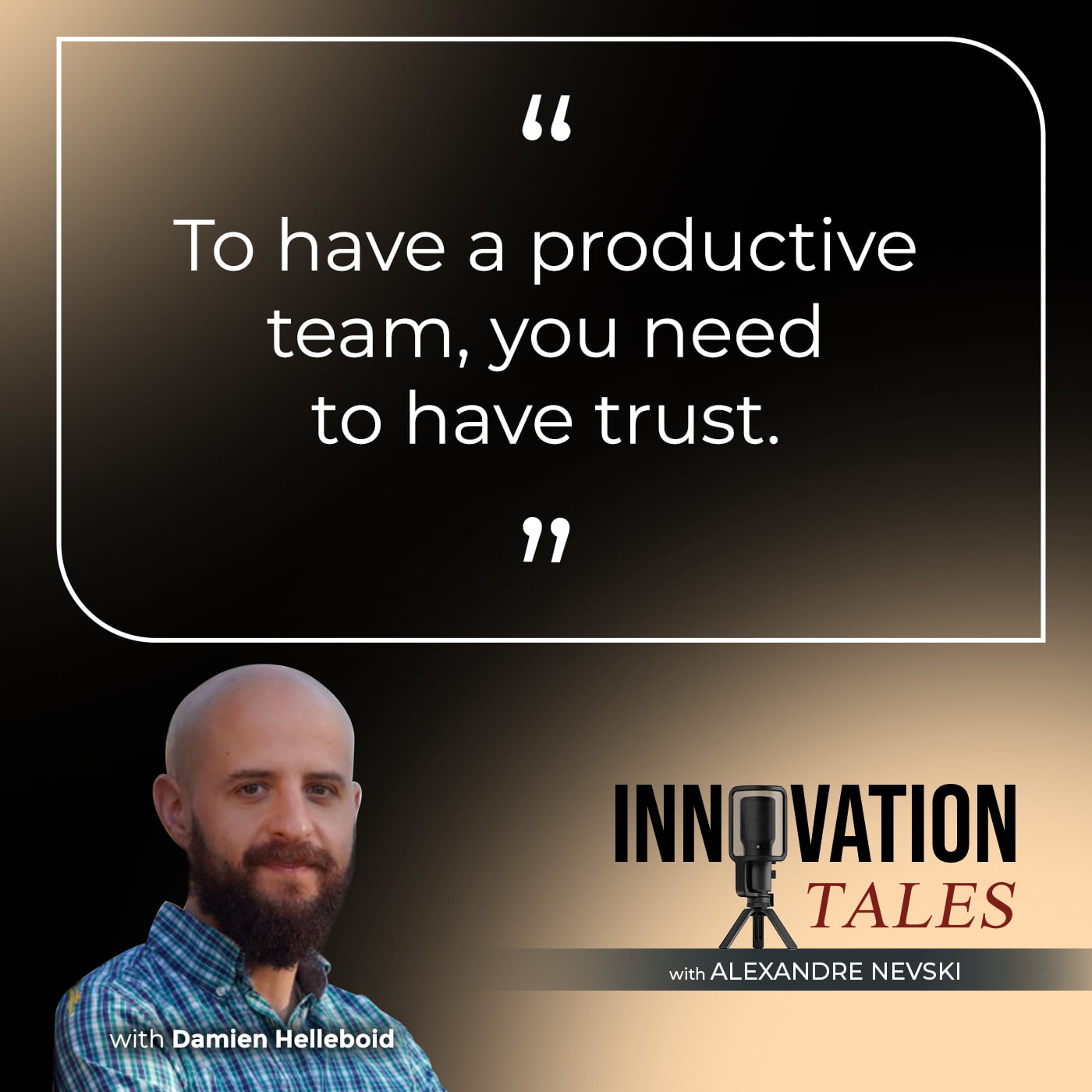
Every new parent or every parent will have the same thing. If you take care of some stuff in your house, it’s very practical to have the opportunity to work from home. Now, at least for me, what works for me is I cannot work from home 100%. COVID was very difficult from that point of view. I like to meet people face to face. I know some people can work remotely and be incredibly productive.
For me, I need a healthy mix of both. What’s interesting, since COVID, when I came back to work, I had a bit of a thought about how I work from home and how I work from the office. It’s interesting how if I’m in the office, I’m going to structure my week very differently than if I’m working from home. If I’m working from home, I can be incredibly efficient.
If I decide to have two hours of no notification, nobody can pop out of my desk and say, “Damien, let’s go for coffee, or let’s do that.” You’re there and you can have full focus concentration for three hours. I use that when I’m working from home. If I’m in the office, I usually am going to plan a lot more meetings with people, even if it’s just a coffee break or a lunch break just because you create that relationship.
You have the best of both worlds. You can have the advantage of being engaged with people at the human level.
A very concrete tip or at least a consideration I would give people who have offshore or people who are working from home is to not necessarily force them to come two days a week. I’m seeing it more and more. I don’t think that worked because again, there’s this notion of you don’t trust your employees. Sometimes just say, “We’re going to have a big team event. Can you guys make it this week? Let’s make something fun. We’re going to work, but let’s do something fun together as well.” You create that relationship between people.
I feel like this is one of the most underrated aspects where office time is seen as a mechanism for control, whereas the opportunity is there to energize.
It’s an opportunity to meet people, have a coffee, and talk about other stuff. You need that. Productivity is not working 100% of the time. If you work 100% of the time, your actual amount of work is probably going to be less. I don’t have any stats.
This is the expert’s opinion. That’s what this is.
I do think you need you’re going to do your best work if you know the guys you’re working with and if you have that team spirit. Lord of the Rings is a very good example of this. You’ve got this team of guys working together towards a goal and they don’t all get along, but you’ve got these other elements. It’s quite well written from that point of view. It’s a believable team. Some people don’t like each other and some people like each other. Some of them have deep trouble, but somehow they get to the end. They do manage to go and destroy the one ring.
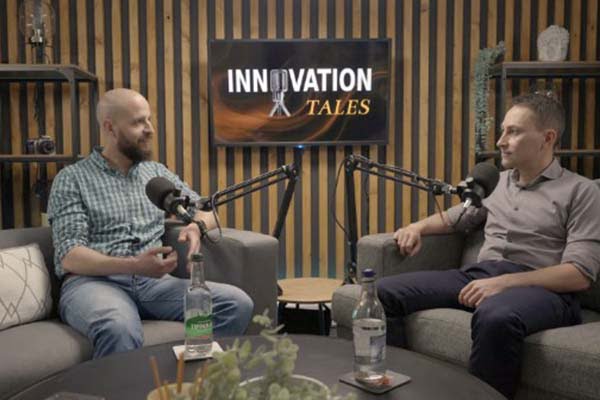
Even though this is probably an unexpected example, it’s very close, or at least to my experience, because when I think of these digital transformations that you and I have been involved in, we are writing a certain story. There’s a technological aspect that translates into something that is running at some point. There is a realistic aspect to it but sometimes it’s all about perception, isn’t it?
It is. Another white topic is managing expectations and that’s something you learn in pre-sales. You need to make sure that the expectation is managed from the early. That was one of my advantages in pre-sales. It was understanding what happens after the thing gets sold. I was very cautious but I did not want people doing the implementation to suffer because of what I’ve done.
The other thing is when you’re in pre-sales, you realize you have very little time to analyze the exact requirements. I understood a lot more. When I was put in a certain situation because of a sale gone, I was going to say gone wrong, but not necessarily gone wrong because it’s sold. Having an understanding of both worlds. When you’re not there, that’s a very human trait, we tend to simplify everything and we forget certain factors. We don’t necessarily understand what the others are doing. It’s always interesting to try to understand that.
Is there any final message you’d like to leave our audience with?
Very corny, just be kind to each other. Projects go better if people don’t scream at each other. If people genuinely are nice people, your project will go way better. If someone doesn’t work in the team, get rid of him. It’s not necessarily because they’re bad people. You just can’t get along with everyone. Make a team that works.
Digital transformation projects go better if people do not scream at each other and everyone is genuinely nice people.
That’s perfect. Thank you very much, Damien.
Thanks for having me.
Important Links
- Damien Helleboid – LinkedIn
About Damien Helleboid

As the Director of Prarion Limited, Damien Helleboid brings a rich blend of technical mastery and leadership acumen to the forefront of software solutions. His proven track record across major tech firms, highlighted by pivotal roles at Transavia and LeasePlan, demonstrates his ability to lead digital projects from vision to execution.




